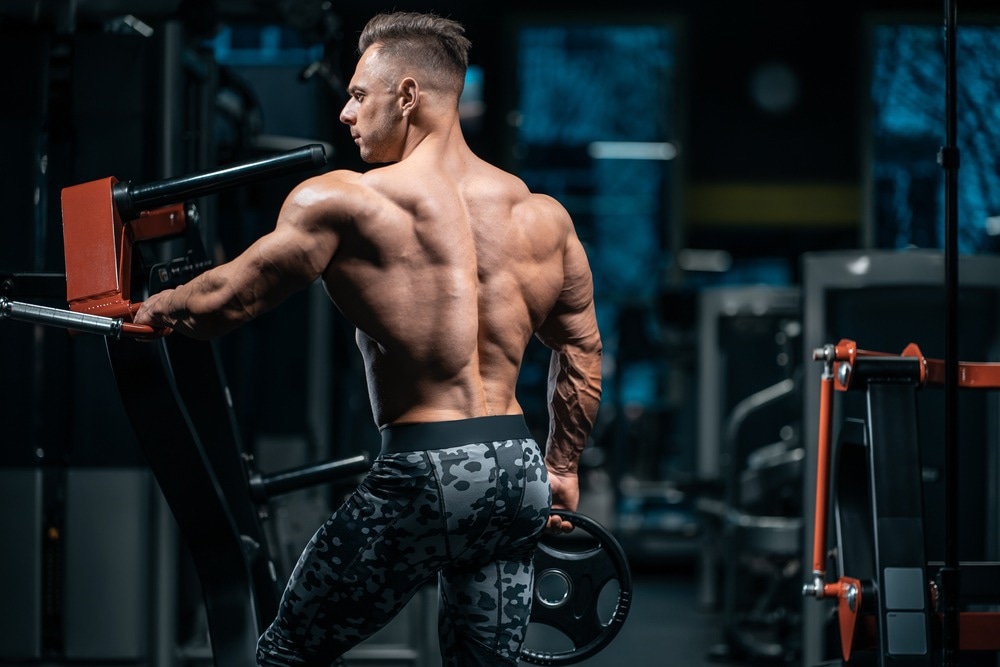A recent study published in Metabolites explored the diet-exercise-gut microbiome dynamics in male bodybuilders.
 Study: Intersection of Diet and Exercise with the Gut Microbiome and Circulating Metabolites in Male Bodybuilders: A Pilot Study. Image Credit: Goami/Shutterstock
Study: Intersection of Diet and Exercise with the Gut Microbiome and Circulating Metabolites in Male Bodybuilders: A Pilot Study. Image Credit: Goami/Shutterstock
Background
The optimal exercise and diet regimes are elusive as exercise/diet interventions have achieved varying outcomes between individuals. This is observed in sports where diets have been designed to complement athletic performance and optimize energy availability. Still, individual factors determine athletic outcomes. Lately, there has been a growing interest in the role of gut microbiota in individual athletic outcomes.
About the study
In the present study, researchers tested whether defined changes in diet and exercise in bodybuilders are associated with changes in the gut microbiota and metabolites. Male participants aged 18 or older, preparing for a bodybuilding competition, were eligible for inclusion.
Five bodybuilders with longitudinal blood and stool samples matched with exercise and diet history were selected. They were, on average, 28 years old, 177 cm tall, weighing 77.7 kgs with 4.2 years of experience in bodybuilding. Specimens were obtained eight weeks (PRE8), one week (PRE1) before, and four weeks (POST4) after the competition.
Participants abstained from alcohol, caffeine, and exercise 12 hours before the blood sampling. Hydrophilic metabolites were measured in a targeted metabolomic analysis using a liquid chromatography-mass spectrometry (LC-MS) system. Participants completed food and training diaries for a week before each assessment point.
Consumption of food, fluids, and supplements was documented in food diaries, whereas resistance and aerobic training were documented in training diaries. Body composition was estimated using a dual-energy X-ray absorptiometry (DXA) scanner. Stool specimens were self-collected by participants within a week before each assessment time point. Total DNA was isolated from the stool samples. The V4 region of the 16S ribosomal RNA (rRNA) was used for microbiome profiling.
The changes in exercise and body composition at PRE1 and POST4 time points were compared to PRE8 as the baseline. The differences in metabolite concentrations between time points were analyzed using the Kruskal-Wallis test. One sample from the PRE1 time point was excluded from the analysis due to a failed LC-MS quality control check.
Findings
All participants reached the intended changes in body composition during the preparation period (PRE8 – PRE1). There was a higher decrease in fat mass than in lean mass. Two participants were more successful in preserving lean mass than others. One participant had the least (6.4%) fat mass reduction. There was an increase in fat and lean mass after the competition among all participants.
Exertional training was reduced at PRE8 and POST4 time points compared to baseline, but training regimes varied across individuals. The increase in aerobic and resistance training from PRE8 time point to PRE1 in only one participant reflected better lean mass conservation but did not correspond with fat mass reduction. Next, participants were assessed for dietary intake at – food item, macronutrient, and energy levels.
Energy intake was similar across participants and the highest post-competition in four participants. Greater pre-competition (PRE8 to PRE1) declines in energy intake corresponded with a better reduction in fat mass but not lean mass changes. Pre-competition protein contribution to energy was above the upper limit of the acceptable macronutrient distribution range (AMDR), while carbohydrate contribution was below the lower limit. Energy intake as fat was within AMDR limits.
The minimum recommended daily intake (MRDI) of protein exceeded in participants at all time points. Besides, there was inter-individual variability in the consumption of protein/amino acid supplements. Each participant exhibited a unique and dynamic gut microbiota. There was no significant association between samples from a single time point from different participants.
After the competition, a temporal shift was observed in the microbial diversities between- and within-sample(s). The microbial communities at PRE8 and PRE1 time points of each individual were more similar than the POST4 sample community. Moreover, four individuals had a low within-sample diversity at the POST4 time point.
Across all participants, most microbes (55% to 85%) were Firmicutes. Serum metabolic profiles of participants were evaluated in fasting and exertion-abstained states. Of the 127 metabolites, nine were found significant by time point. Participants had unique metabolite profiles throughout the assessment.
The POST4 metabolite profiles were different from PRE8 or PRE1 profiles. Before the competition, the metabolite profiles were characterized by higher levels of malonate, guanidinoacetic acid, acetylcarnitine, α-ketobutyrate, and β-hydroxybutyrate. In contrast, post-competition profiles were characterized by increased saccharopine, choline, and NAD+ levels.
Conclusions
Overall, all participants successfully reduced fat mass and preserved lean mass during the pre-competition period. Participants with the highest pre-competition decrease in dietary energy intake showed greater reductions in fat mass. Microbial composition differed significantly between individuals. Despite the inter-individual differences in the gut microbiome composition, the microbial diversity within- and between-sample(s) could be predictably diet-modulated.
The findings suggest that predicting dynamics between the gut microbiome, metabolites, diet, and exercise would be successful at an individual level rather than across individuals. Thus, personalized exercise training and diets would be more beneficial than diet/exercise regimes based on population-generalized patterns.